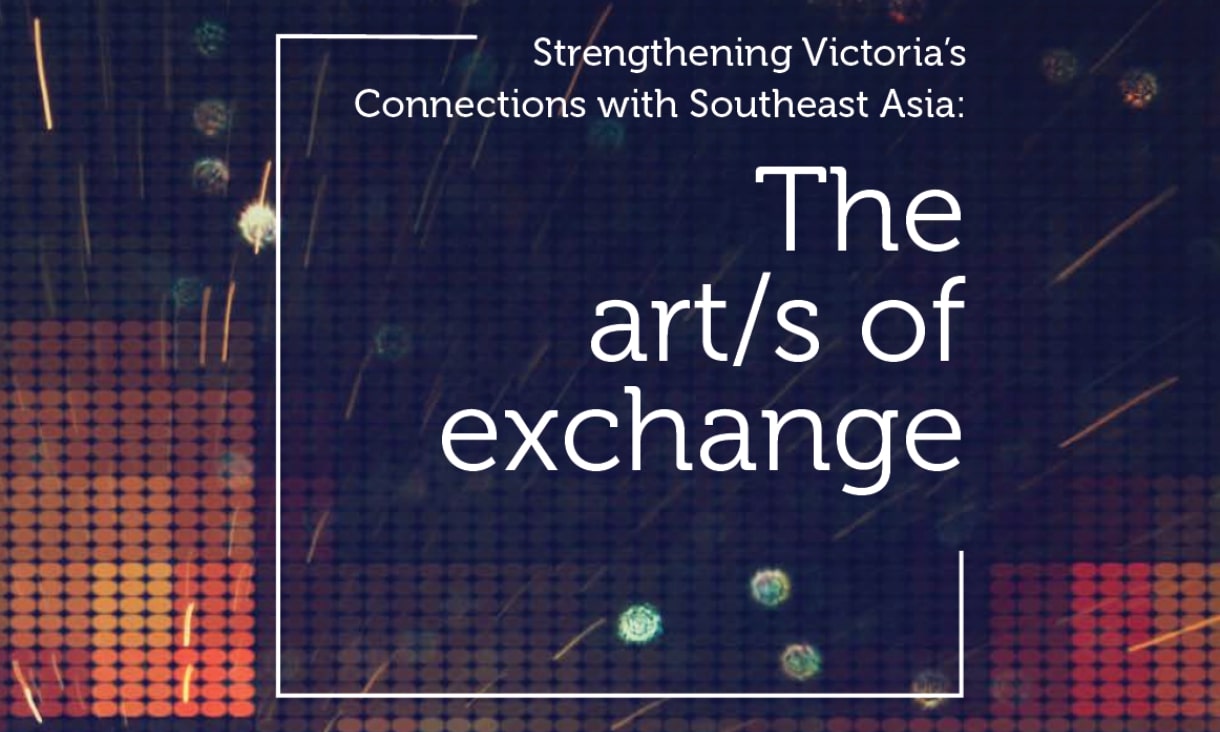In 2022, the Asia Trade and Innovation Hub (ATIH) released a series of three reports with the goal of enhancing the relationship between Victoria and Southeast Asia.
Strengthening Victoria’s Connections with Southeast Asia: The art/s of exchange - is the second report in the series of three reports launched in 2022 by the RMIT Asia Trade and Innovation Hub (ATIH).
This report examines how COVID-19 impacted online distribution of, and access to, digital cultural services across the state’s many Galleries, Libraries, Archives and Museums, as well as online cultural opportunities for this sector.
Written by Professor Jules Moloney from RMIT’s College of Design and Social Context, with assistance from Dr Bree Trevena and Anna Huggins, this report is designed as a roadmap to leverage the region in Victoria’s social and economic recovery.
The research, led by Dr Li Ping Thong and Dr Jane Button from RMIT University, outlines the leading sectoral practices for providing online cultural services driven by the pandemic so as to inform future decision making about how to advance and evolve online service delivery.

A new narrative for online culture
The COVID pandemic threw Victoria’s publicly funded cultural institutions into the digital deep end, creating unprecedented disruption but also acting as a catalyst to present collections in new ways and new places.
The report explores how online cultural services might enable Victorians and the GLAM sector to expand creative exchange and trade with regional neighbours in the eleven countries of Southeast Asia. It finds that there are many opportunities in a region which is embracing digitisation, but which has a mostly relatively underdeveloped online GLAM sector.
The main act
Victorian arts agencies were generally at the forefront of innovative global online service delivery, backed by pre-existing leadership support and digital strategies alongside in-house skills. The small to medium GLAM sector players made a more modest and incremental move to online offerings, often from a limited base of digital sophistication.
The pandemic prompted prioritisation of the need to increase digital capability across the sector, leading to formal and informal initiatives to share knowledge, pollinate cross-sector learning and offer digital mentoring. While some more well-resourced, digitally led organisations have experimented with maturing tech like augmented reality and blockchain, most have adopted low-cost digital platforms as the means to reach a mass public virtual audience.
To grow Victoria’s cultural services, appropriately skilled GLAM organisations are needed to incubate, accelerate and scale emerging business models, technologies and curatorial practices through lab-type environments for the smaller end of the digital sector.
Expanding the house
Many Victorian GLAM organisations reported an increase in regional audience engagement during the pandemic. Geographically distant stakeholders were more able to participate in the development of digital content, participate in two-way online conversations and access more and higher quality digital content.
Online experiences designed with adaptive technologies and interfaces were seen to provide access to people who may be unable or uncomfortable visiting physical sites. Nonetheless, a digital divide was still evident. Barriers included affordability of quality broadband, options for low-cost devices and relatively few inclusive platforms designed for accessibility.
Digital literacy was found to be a barrier to participation for older audiences. For younger audiences, the barrier was a lack of access to devices and of digital skills to develop online content for themselves.
The new regional gallery
This emerging opportunity for people-to-people engagement and business in Southeast Asia in the GLAM sector aligns with Victoria’s broader opportunities in this region examined in the separate report Strengthening Victoria’s Connections with Southeast Asia: Trade and Investment Opportunities. The growing two-way tourism and education ties between the State and the countries of the region provide a further foundation for cultural connections.
A playbill for the future
The report outlines a flexible set of scenarios to advance Victoria’s digital cultural service ambitions in a matrix which takes account of different levels of digital maturity in the GLAM sector and is arranged to address leadership, skills, and different platforms.
It provides practical advice on:
- How to better activate collections for a digital audience
- Measures to improve the experience of this new audience
- Making digital collections more inclusive and diverse
- New business models to support online access to collections
- Pathways to delivery and cooperation in Southeast Asia
Some of the proposed scenarios are already in play within the Victorian GLAM sector. So, the intention is not to rebuild the wheel. Rather it is to highlight the importance of these measures, promote them more widely in the sector, identify where up-dates may be valuable, and advocate for continued resourcing.